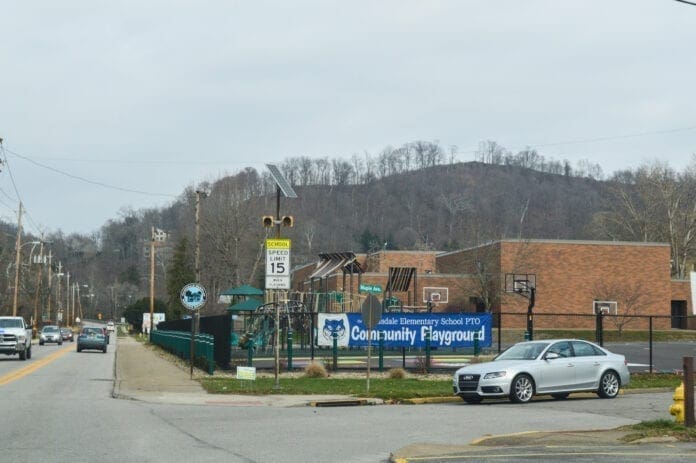Even if students attending Ohio County Schools are not attending in-class instruction, if school zone signage is operational, the 15 mph speed limits in those areas can be enforced by deputies of the Ohio County Sheriff’s Office.
There are 13 public school buildings in Ohio County, including one in Bethlehem, one in West Liberty, one in Middle Creek, and 10 in the city of Wheeling. Ohio County Sheriff Tom Howard said most of the signs have continued blinking in those areas although the majority of students have remained home because of the COVID-19 alert map that is released each Saturday by the state Department of Education. Most of the public school students in Ohio County have been remote learning for nearly a month, but many of the system’s special needs students have continued reporting to their school buildings.
“As long as the signs are operating, we could still enforce those speed limits, but we have not made it a priority in the areas where the special needs students are not attending,” Howard explained. “If there are no children present at the schools, we’re not going to enforce them, but most people do not know when the kids will be there week to week, and that’s why we would like for people to continue obeying those speed limits.
“If someone happens to miss that the kids are back in school, we don’t want them to be flying through a school zone,” he said. “We just don’t want anyone to get hurt because someone didn’t realize the students would be in that school zone because the alert map went from orange or red to yellow.”

Construction Zones
Following the passage of the $42 million bond issue in May 2018, construction projects began at 10 of 13 facilities operated by Ohio County Schools. Many of the projects involved interior renovations, but a few include the building of new additions.
That is why Howard suggests motorists in Ohio County should reduce the speed of their vehicles in the communities where the bond projects continue.
“Right now, there is a lot of construction taking place at a lot of the schools here in Ohio County, so it’s a good idea for people keep their speeds down when in those area because of the activity that’s taking place,” Howard said. “Especially along National Road near Triadelphia Middle and Steenrod, there are big projects taking place with a lot of workers and vehicles.
“If people get out of the habit of taking their time and obeying those school zone speed limits, my main concern is that something bad is going to happen when the kids do get to go back to their schools,” he said. “We don’t know when that will be right now, and it might not be until January, but I will still prefer if people obey them so they stay in the habit.”

Caring for Kids
When Howard initially campaigned to become Ohio County’s sheriff in 2016, he told voters one of his goals was to gain funding for prevention resource officers (PROs) in all of the district’s buildings. While he has added a few, Howard has not gained the monies yet to achieve his goal, but the sheriff has developed a rotating system that permits protection for each school.
The PROs interact with students, administrators, and teachers, and the deputies also patrol the interiors and exteriors of the facilities, but when Ohio County is limited to virtual platforms only, Howard alters the deputies’ duties.
“Our prevention resource officers are added to our patrols of the county when the kids aren’t in their classrooms, and they also work with the schools to conduct welfare checks when teachers haven’t had any interaction with a student,” he reported. “Those deputies travel with school counselors to make sure the kids are safe, and everything is OK.
“The welfare checks take place when there is no contact. We’re not going on the welfare checks to make sure the students are doing their work,” Howard continued. “We’re averaging about 30 welfare checks per week that concern children and their lack of contact with their schools. Now, in some areas of the county, the students don’t have access to the Internet because of access issues, but we will go see those children, too, to make sure they are safe.”


